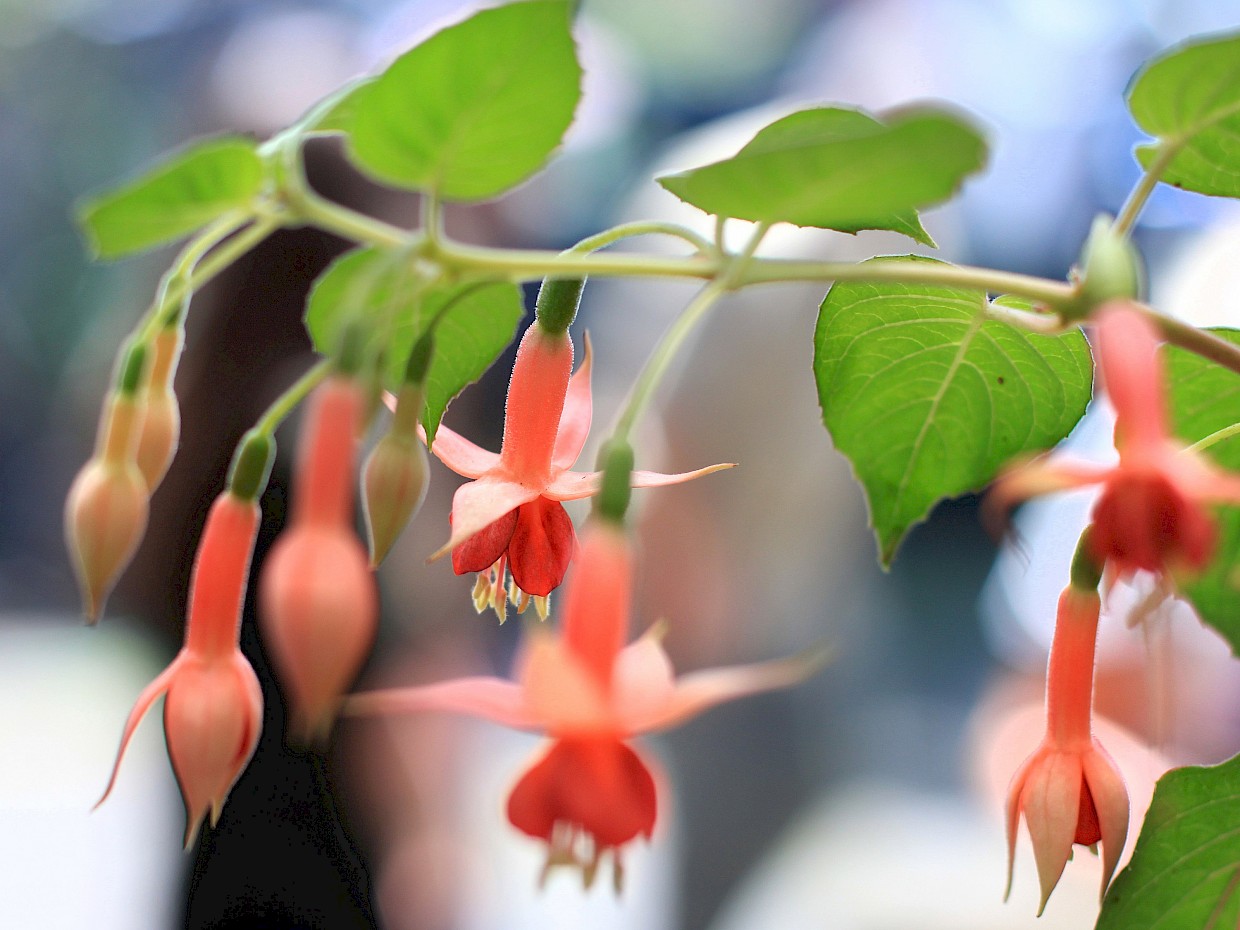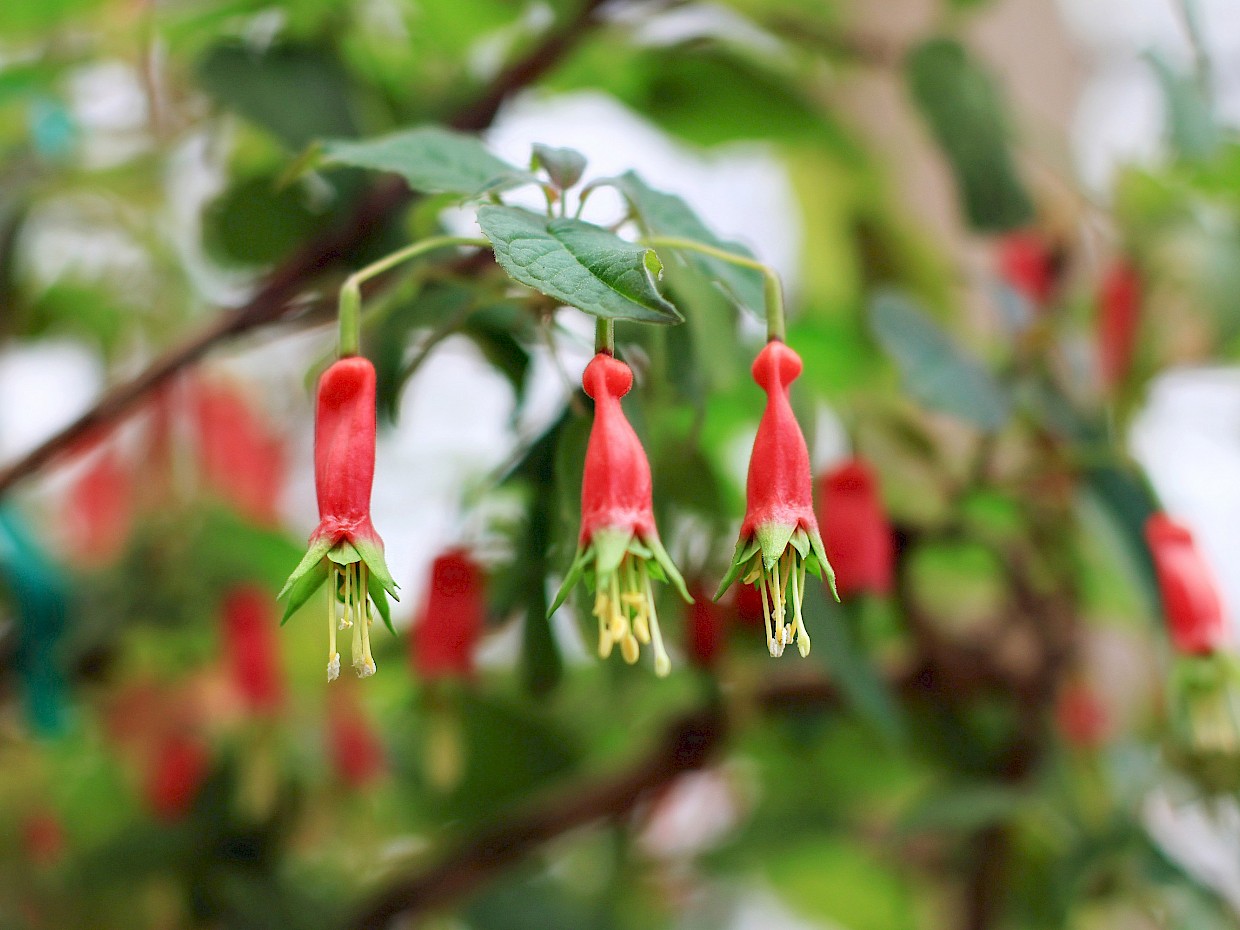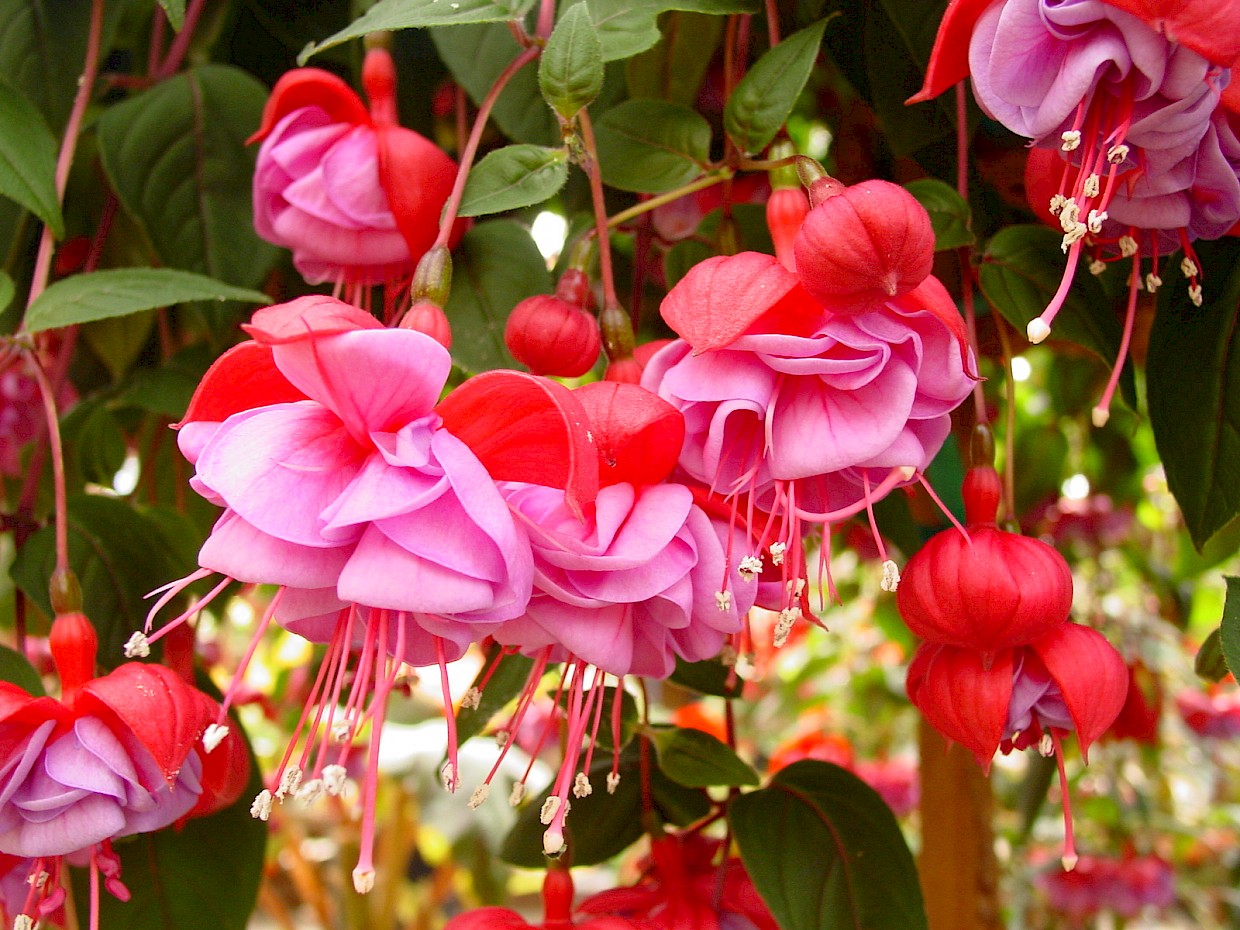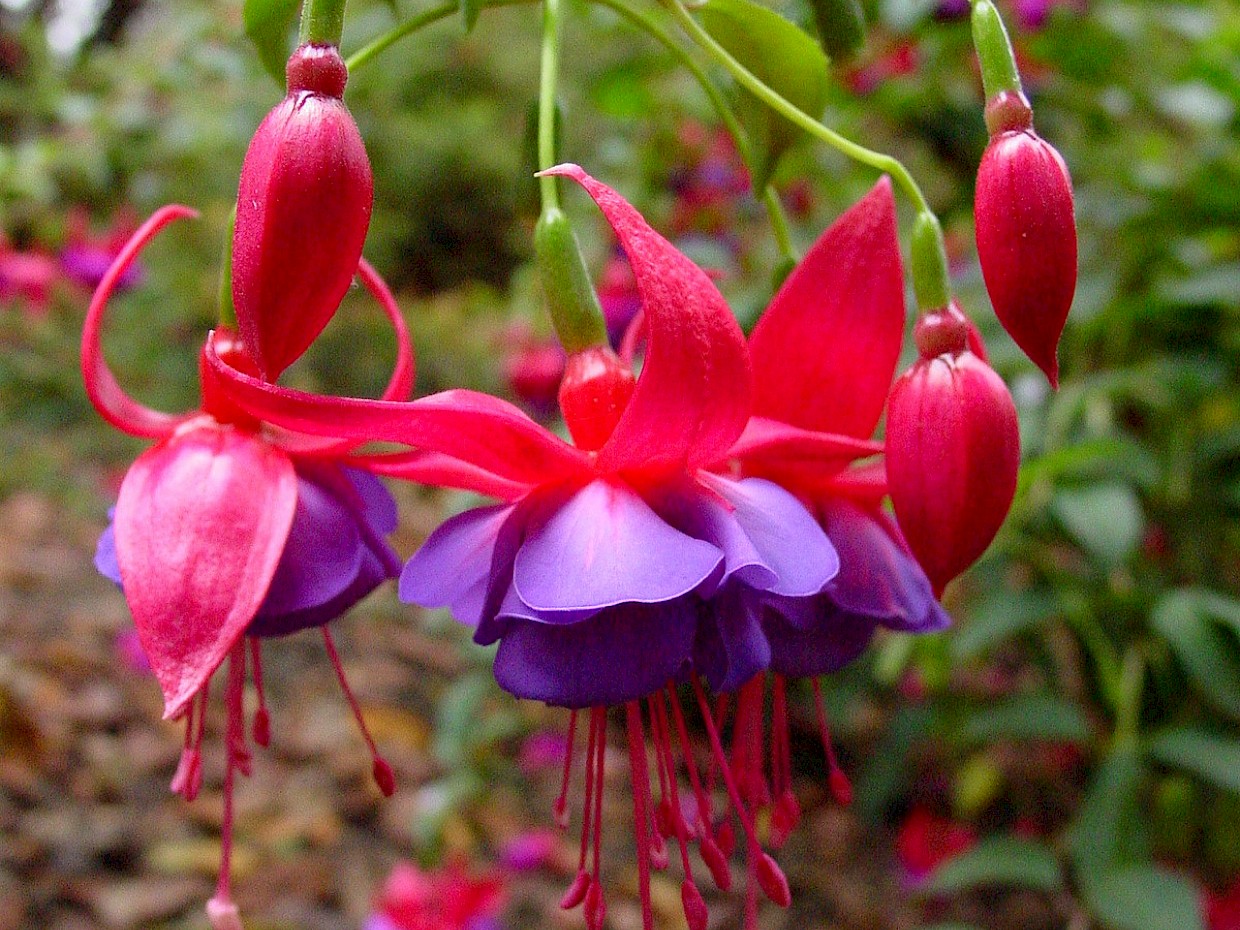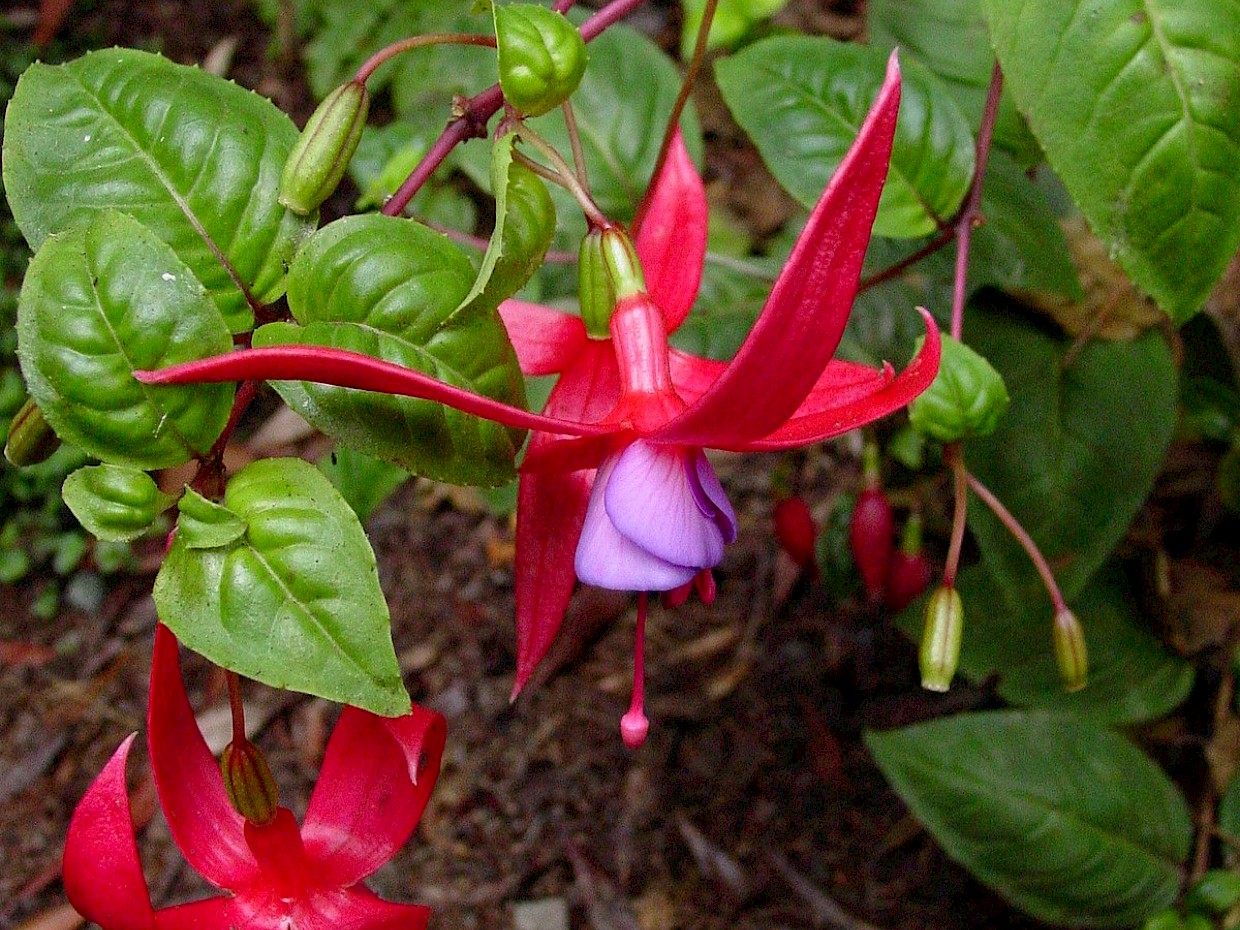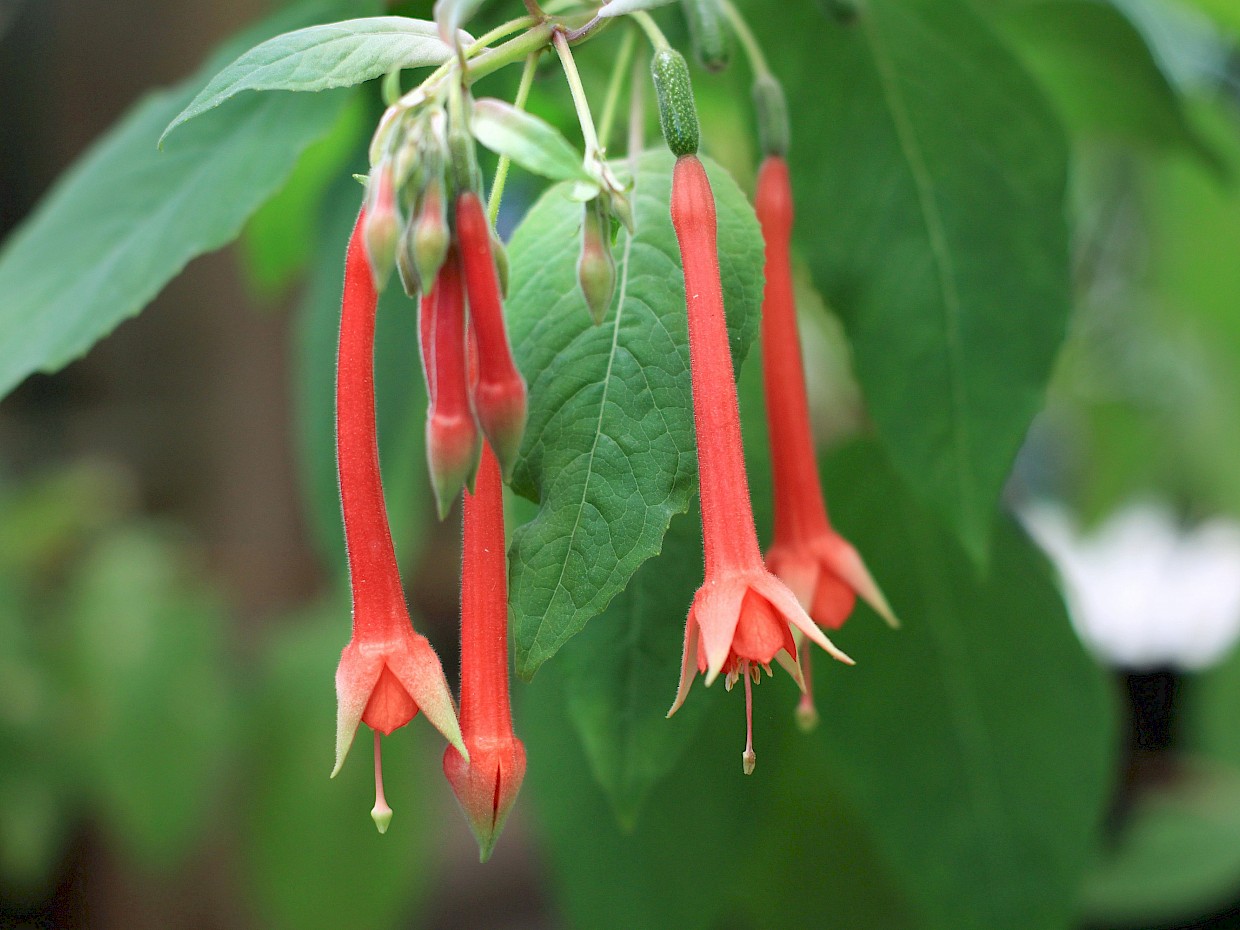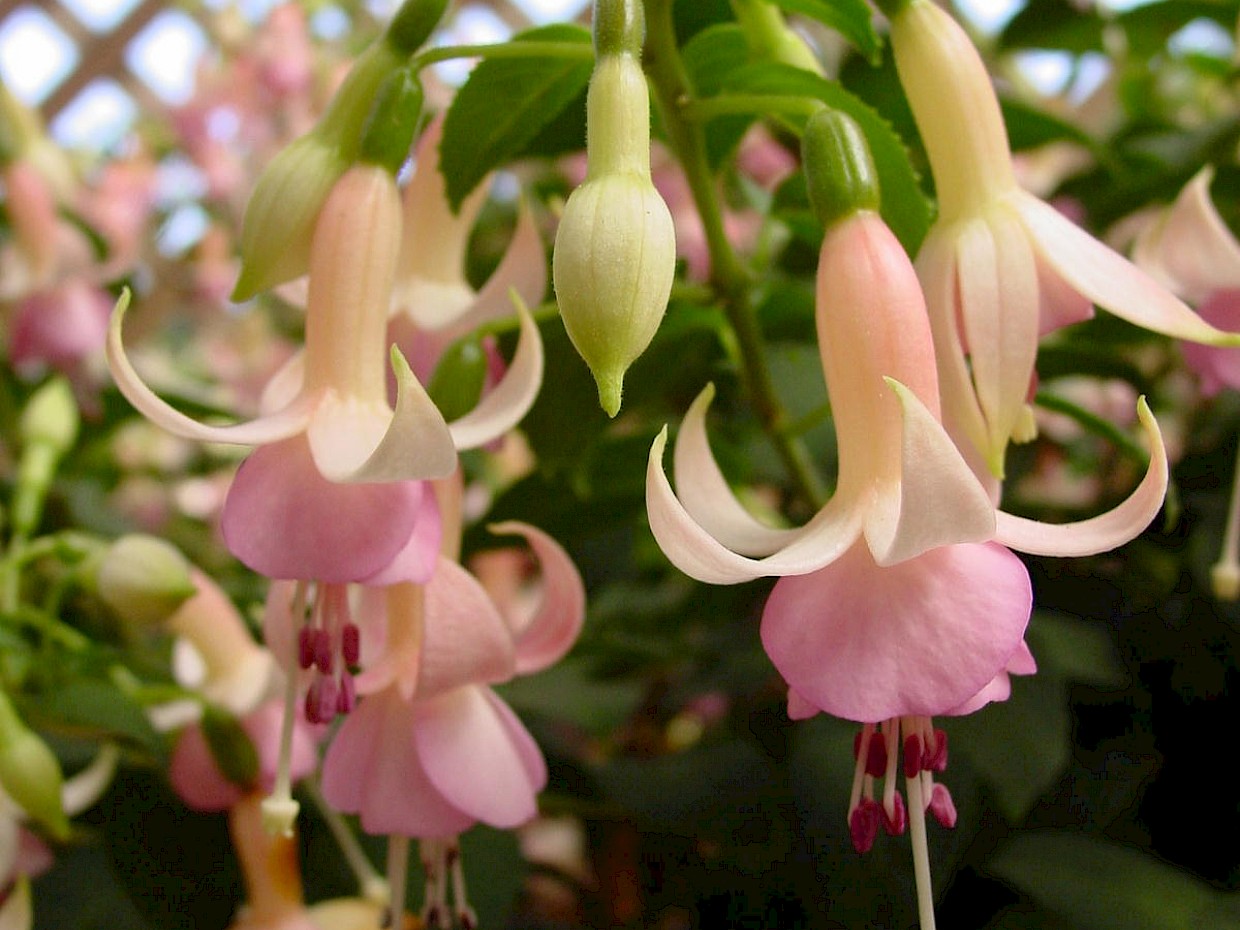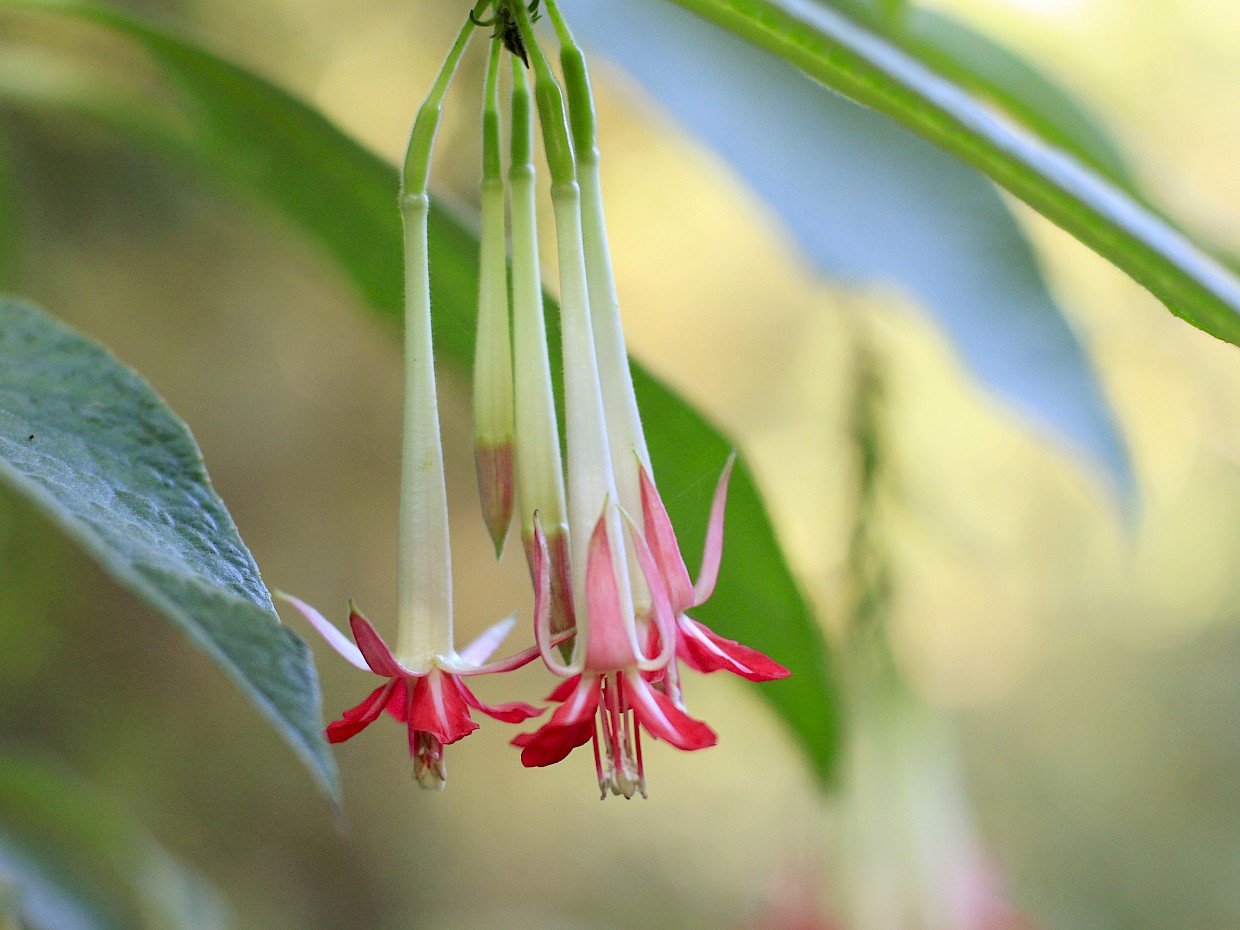Fuchsia Collection
Typical bloom time: June through October, blooms through mild winters
Here on the North Coast, fuchsias enjoy a nearly perfect climate. The Mendocino Coast Botanical Gardens maintains a collection of both species and hybrids. Over 50 fuchsias have been planted in the Woodland Garden. There is also a lovely display of trailing fuchsias in the Mae E. Lauer Display House. Visit the Gardens any time from summer to late fall, even in winter if the weather is mild, to enjoy the fuchsias. Blossoms vary greatly in size, color, and shape. They range from the size of this letter V to large than the palm of your hand. Colors vary from traditional 'fuchsia' to many different combinations of red, lavender-blue, ivory, white, baby pink, pale lavender, deep purple, fiery orange, and warm peach. The shapes call for poetic license. Long, slender blossoms drip from branches like molten rubies. Little ballerinas practice pirouettes, while stately ladies in ruffled crinolines keep watch. Trumpets blow and bells peal as puffy clouds float by. To enliven the tableau, imagine, among the blooms, jewel-colored hummingbirds hovering to sip nectar. Now you know where to turn when your spirits need a lift!
The genus Fuchsia belongs to the Onagraceae family, as do Clarkia, Godetia, Oenothora, and the common fireweed (Epilobium angustifolium). Fuchsias can be found all along the Pacific Coast of South and Central America (as far north as Mexico), as well as in New Zealand and Tahiti. Today, approximately 100 species have been recorded and research is continuing. The cool cloud forests of the Tierra del Fuego are home to F. magellanica, the shrubby species that has most influenced the appearance and cultural requirements of modern fuchsia hybrids. There are also climbers with long trumpet blooms. Fuchsia procumbens, a ground cover with stubby yellow flowers, was found creeping along in the sand of the New Zealand shoreline. Fuchsia excorticata, also from New Zealand, with small, very dark purple and green flowers, is a tree prized for its lumber. Fuchsia arborescens, first discovered in Central Mexico, also grows to tree-like size and has panicles of small lilac-colored blooms.
The first known fuchsia hybrids were grown in England during the 1820s and quickly gained popularity throughout Europe. After World War I, the center of hybridizing activities shifted to California. Today, the love of fuchsias has spread around the globe. Growers can choose from thousands of different varieties and hybridizers everywhere are creating many more.
To see more of our fabulous Fuchsias in bloom, visit our Photo Gallery.
Next: Heath & Heather Collection »
« Previous: Conifer Collection

